RIBA’s new housing prize goes to Mikhail Riches and Cathy Hawley
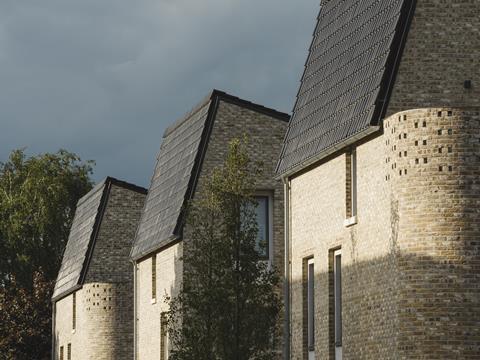
It was a good night for Goldsmith Street, the Passivhaus development by Mikhail Riches and Cathy Hawley, which picked up the RIBA’s inaugural Neave Brown Award for Housing as well as the Stirling Prize.
The £14.8m development of almost 100 Passivhaus flats and houses commissioned by Norwich council has been more than 10 years in the making.
It beat Karakusevic Carson and David Chipperfield’s regeneration project at the Colville Estate in Hackney, Mae Architects’ Brentford Lock project, West Keelson Gardens, and Wilkinson Eyre’s collaboration with Mole at Eddington in North West Cambridge.
Goldsmith Street is an exemplar for social housing and a fitting tribute to the memory of Neave Brown, said jury chair Ben Derbyshire, the immediate past president of the RIBA.
The prize was named after the Gold Medal-winning pioneer of social housing schemes such as Alexandra Road in Camden who died last year. This year’s jury was completed by Levitt Bernstein director Jo McCafferty and Adrian Gale, formerly of Plymouth School of Architecture.
Goldsmith Street consists of seven Victorian-style terraces set around car-free ginnels some 1.5 miles west of Norwich city centre.
The architects, working with the council, demonstrated impressive sensitivity and prowess at every stage of the process, said Derbyshire.
“The result is not just a highly desirable new neighbourhood for Norwich, but homes of the highest quality and most exacting environmental standards,” he added.
“That the outcome appears so naturally at ease in its context requires skill and determination belied by the scheme’s apparent simplicity.
“The UK urgently needs more ambition and creativity to drive the housing revolution that is needed, and Goldsmith Street shows us how it can be done.”
Jury report
Finding Goldsmith Street takes you through a very typical English provincial city residential neighbourhood. Goldsmith Street is an exception though. It captures the spirit of a very special place. A coherent visual field that communicated the best of enlightened modern domestic European architecture from the outset. The more one absorbs this project, the more this feeling is reinforced.
The architects won this scheme of just over 100 dwellings a dozen years ago, and have worked and re-worked it, each time keeping their aim of creating a highly sustainable community in mind. The eventual layout is a simple series of seven terrace blocks arranged in four lines. An immediate connection with a very recognisable urban layout, the architects were able to convince the planners to accept a narrow 14m between blocks – effectively the street width – through a careful design of windows to minimise overlooking, and a very thoughtful asymmetric roof profile that allows good sunlight and daylight into the streets. The result is a very dense development, but one that is in no way oppressive.
Although the layout has a traceable link with the English housing tradition, the rest of the project is very modern in its conception. Black glazed pantiles, mitred as they go from a roof covering to a wall covering, perforated metal brise soleil, and the new detailing associated with energy-conscious design are wholly contemporary. The brick is also contemporary, with characteristic intentional white efflorescence colouration, set in a mews or small terrace layout. To be certified Passivhaus the windows had to be smaller than the proportion in a Georgian or Victorian terrace, so the architects have used a set-back panel around the windows to give an enlarged feel, and panels of textured brick have been introduced into the main elevations, again to balance the feel of the fenestration along the terrace.
Provision for parking has been pushed to the perimeter, so the streets feel safe and “owned” by pedestrians rather than cars. Bin stores have been thoughtfully used in the front gardens to create buffer zones between the public footpath and the front doors, giving a humane gradation of public to private territory. The “back street” has gardens and a pathway down the centre that has been fully landscaped, although the path takes a wavy course that stops the sense of a “back alley” and gives a welcome curving foil to an otherwise rectilinear scheme.
Tireless work by the architects has kept the standard of workmanship up to a very high level. Social tenants get impressively high specification interiors – in both the end-of-terrace flats and the central terrace houses. Passivhaus detailing has nicely accommodated the mechanical ventilation heat recovery (MVHR) units in the interiors, and the services intakes have been intelligently controlled. Each dwelling has a range of providers’ services pre-wired, so that they can be connected on demand, without the need for a service provider to come in later and drill through vital vapour barrier lines.
Bringing the reduced energy consumption associated with Passivhaus to mass housing is a great achievement, and one that has taken a large amount of effort and care by the architects. This is an exemplary project.









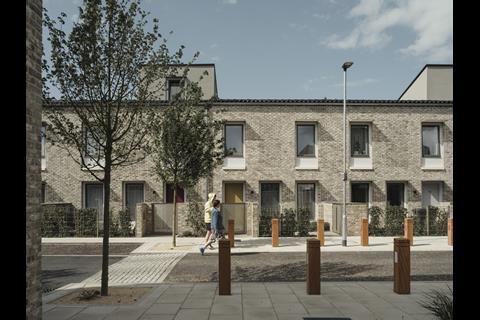
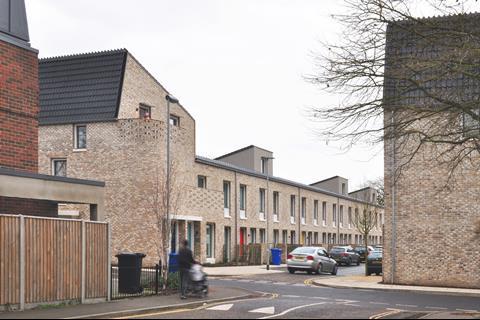
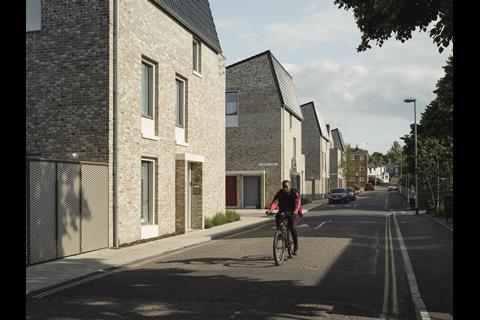
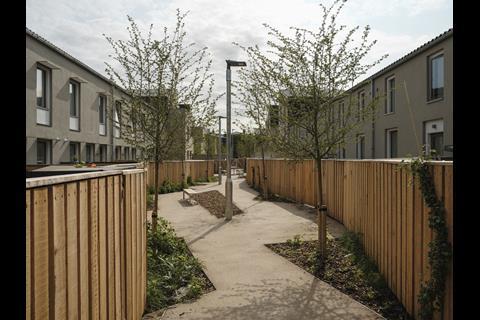
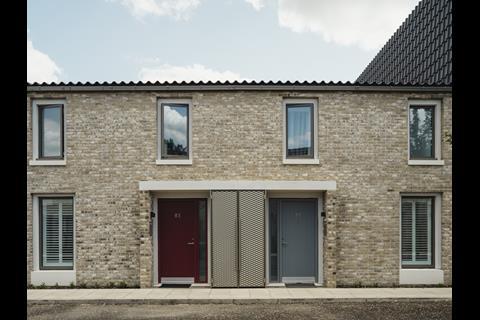

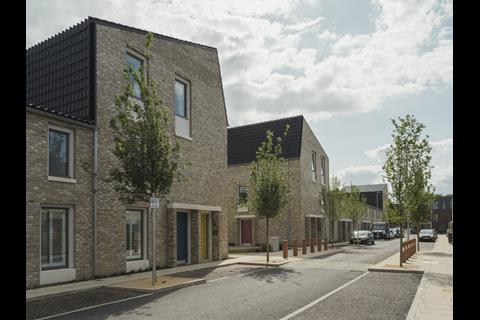









1 Readers' comment